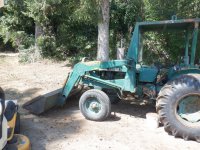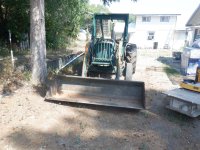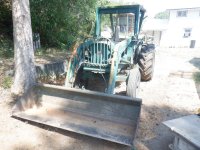DaveOmak
Platinum Member
New to me 401B JD construction tractor... Loader bucket only...
I have concerns about hydraulic lines breaking and someone getting hurt...
I also want the bucket to "float" for winter snow removal..
Can I get some help with both of those things ???
Thanks for any help you can give...
Dave
I have concerns about hydraulic lines breaking and someone getting hurt...
I also want the bucket to "float" for winter snow removal..
Can I get some help with both of those things ???
Thanks for any help you can give...
Dave



